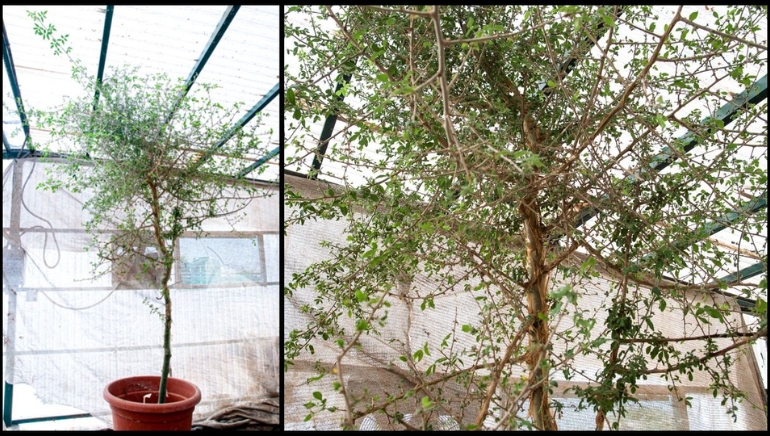The 10-foot-tall tree known as “Sheba” sprang from a seed that was planted approximately 1,000 years ago, between the years 993 and 1202. This old seed probably came from a family tree that was described in the Bible; it was found in the Judean Desert, which is between the West Bank and Israel. Sheba took fourteen years to mature after being unearthed in the course of an excavation in the late 1980s.
According to scientists, the tree may have a common ancestor with an ancient species that was famous for making the biblical balm “tsori,” which had curative qualities. Sheba was first thought to be the ancient “Judean Balsam,” but its lack of fragrant qualities caused scientists to dismiss the idea.
Sheba possesses medicinal qualities, according to further chemical investigation. The antioxidant and anti-cancer chemicals found in its leaves complement the antioxidant and skin-smoothing effects found in its stems. The Commiphora species, which this tree is associated with, is well-known for its aromatic resins; one example being the biblical “Balm of Gilead.”
Numerous scientific investigations, including genetic, chemical, and radiocarbon dating, have linked the biblical woman Sheba to the myrrh and frankincense families of medicinal herbs. Even though the tree has grown tremendously, it still remains a mystery.















